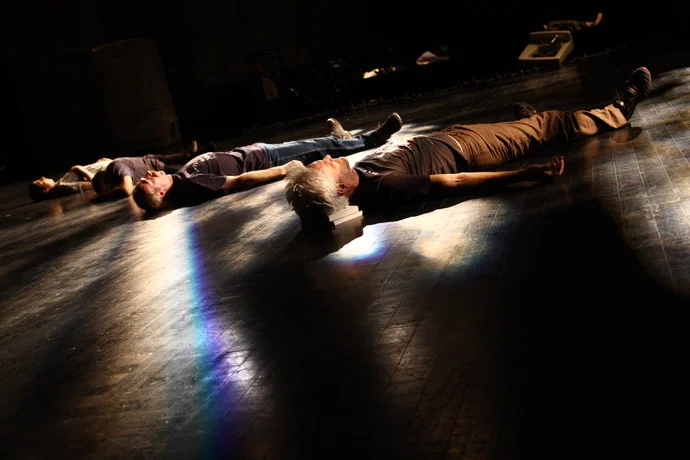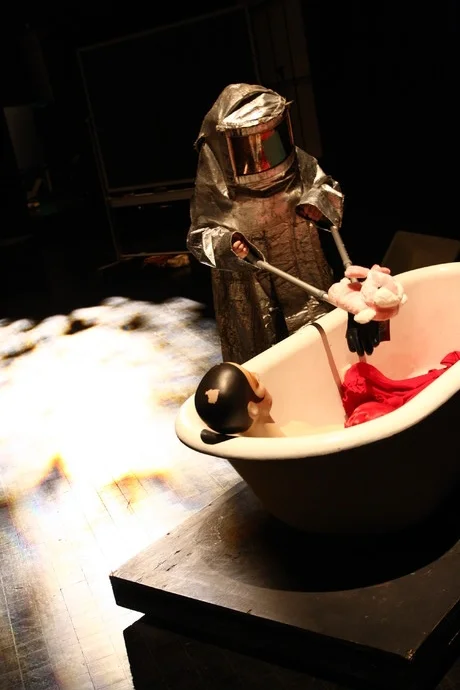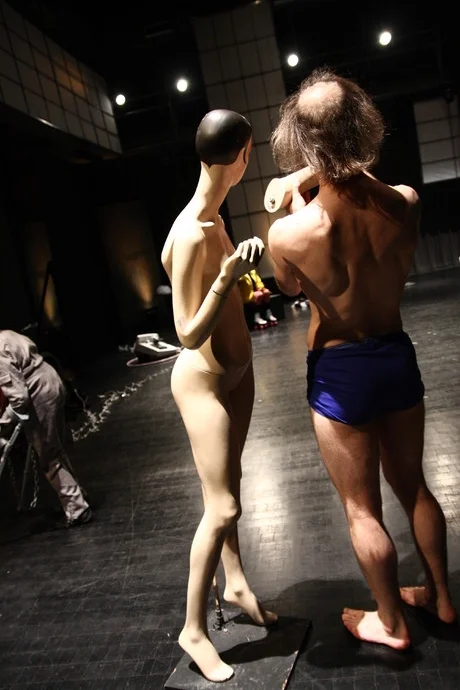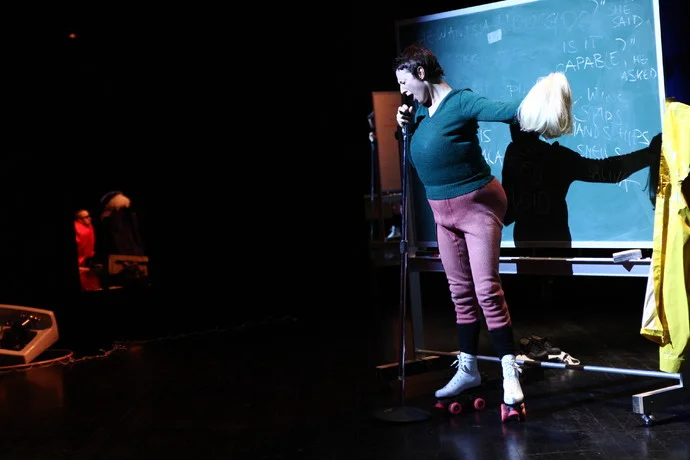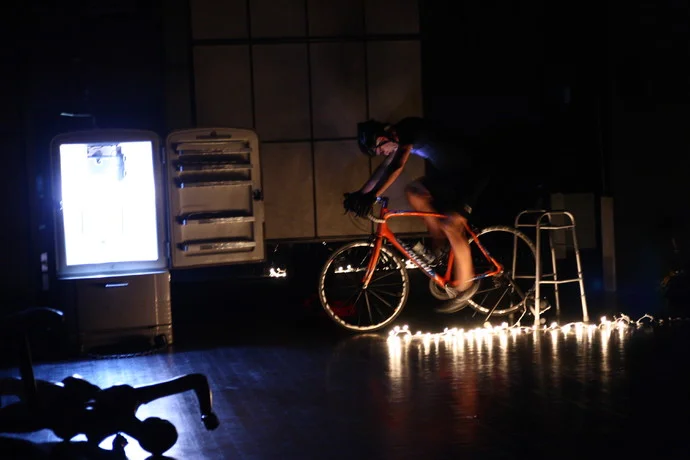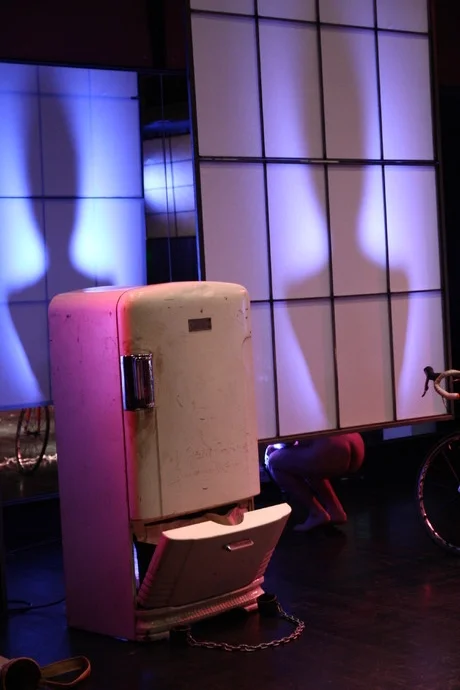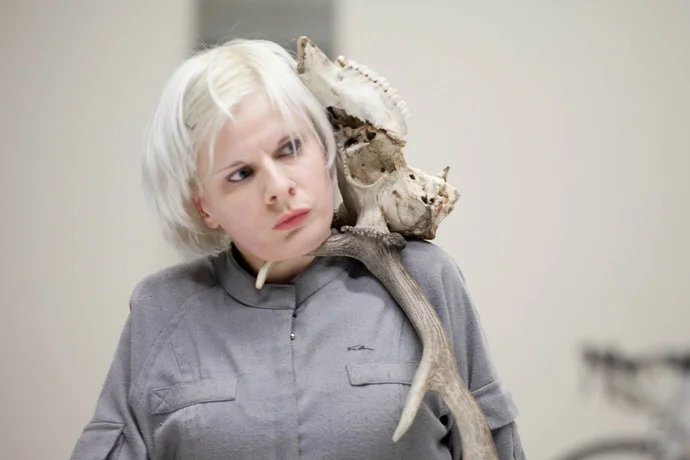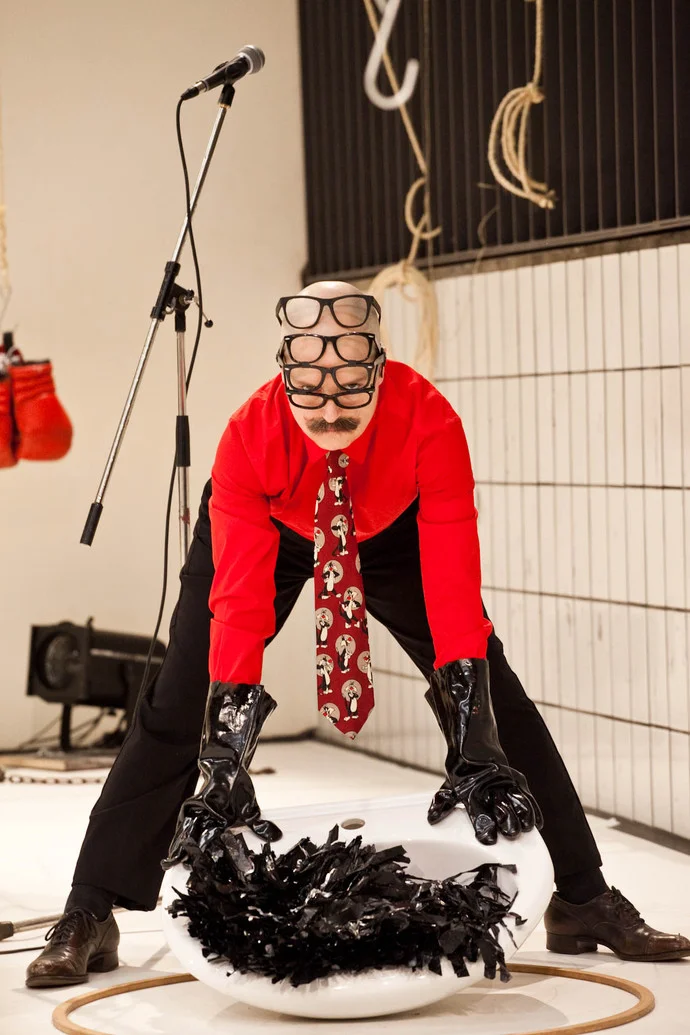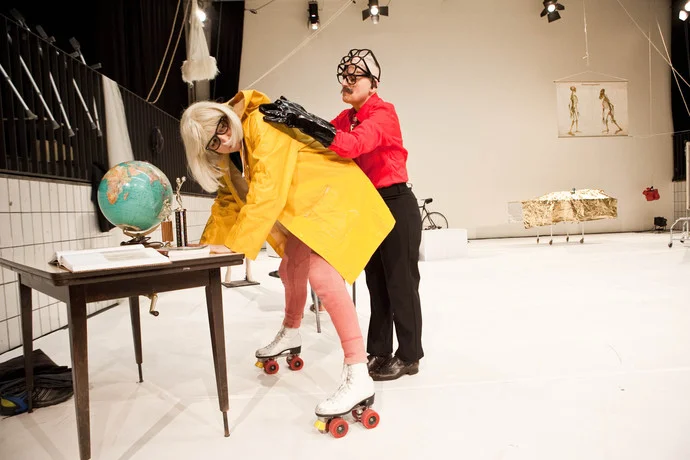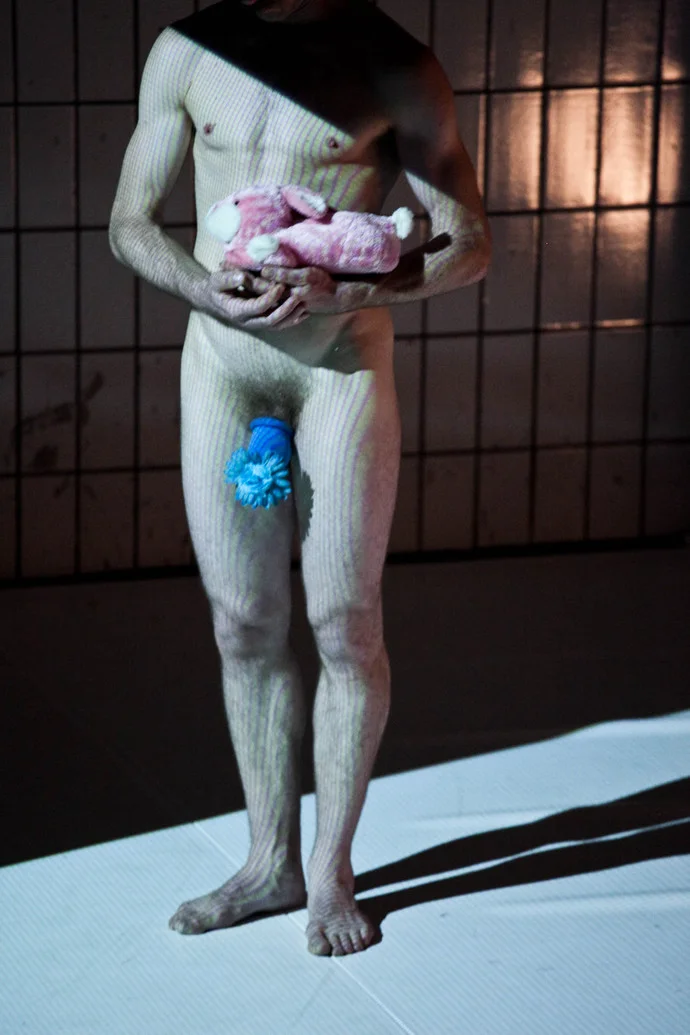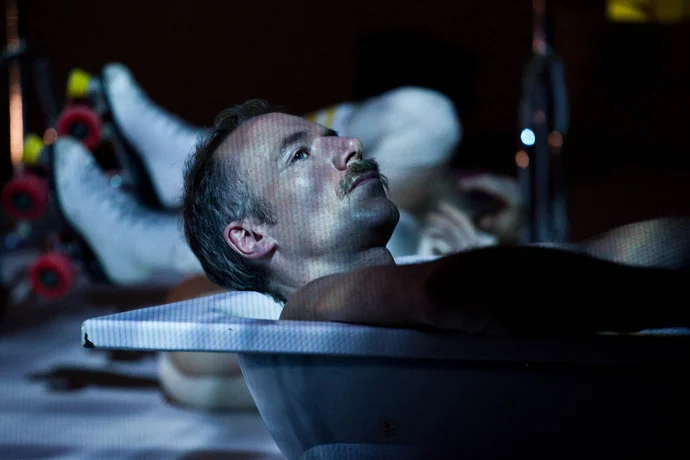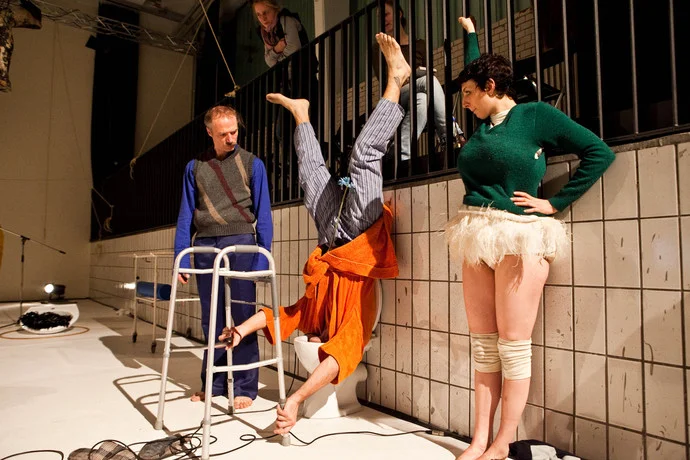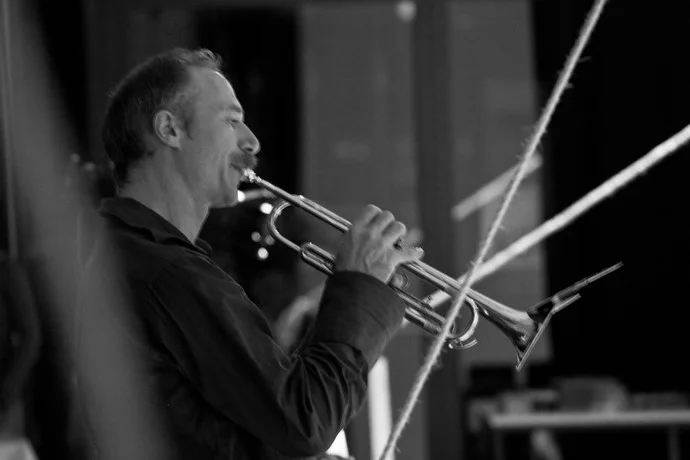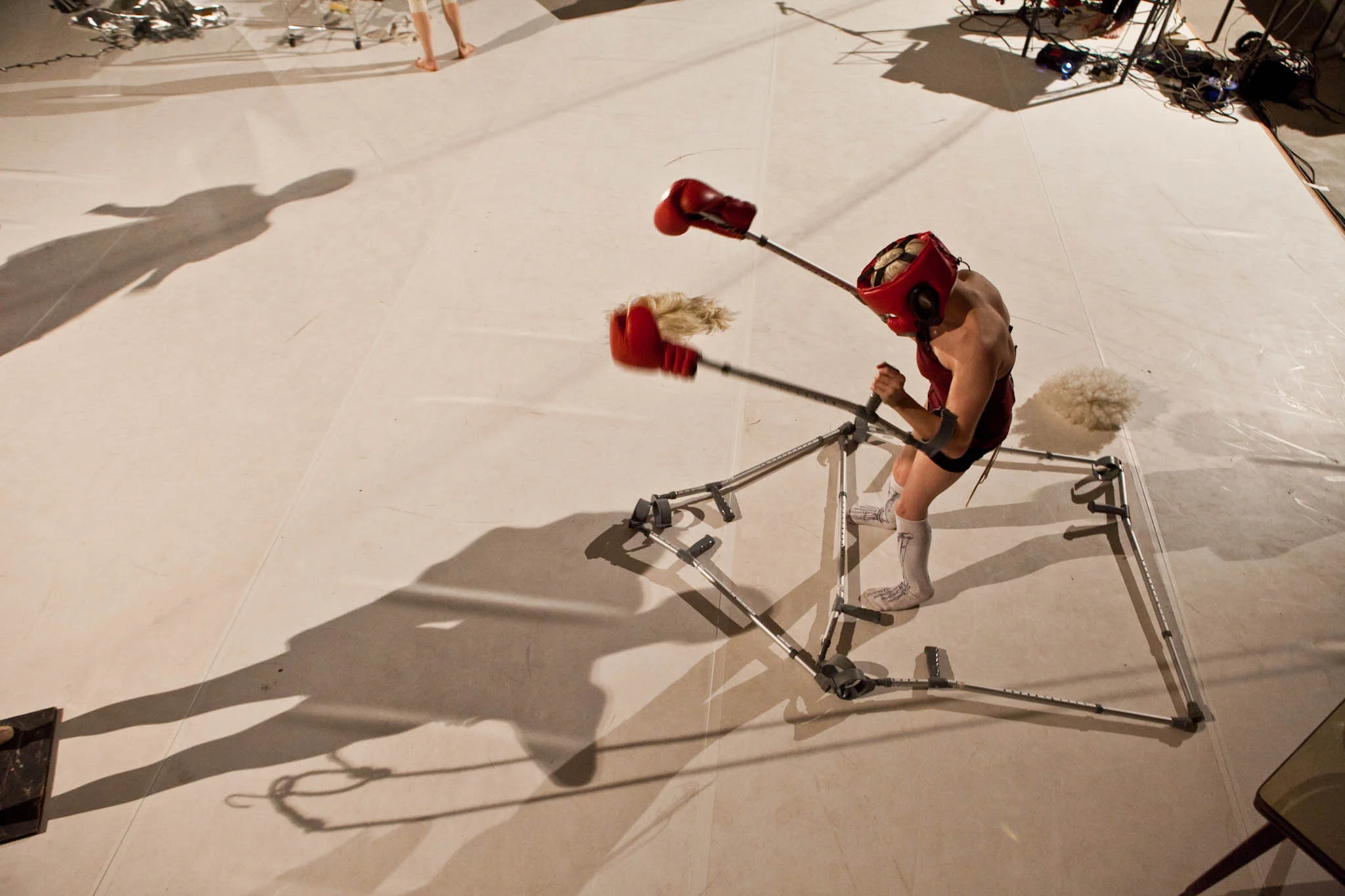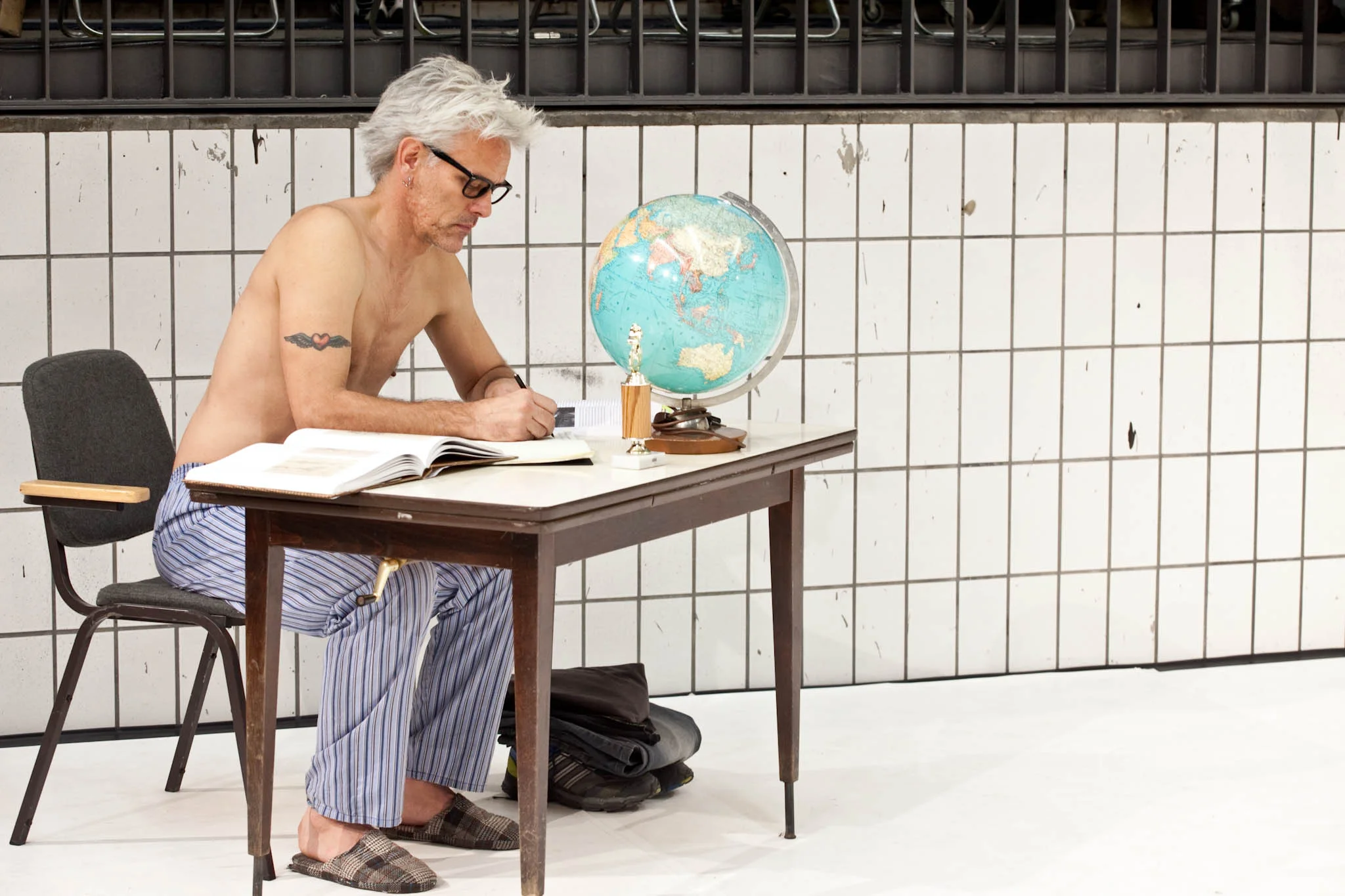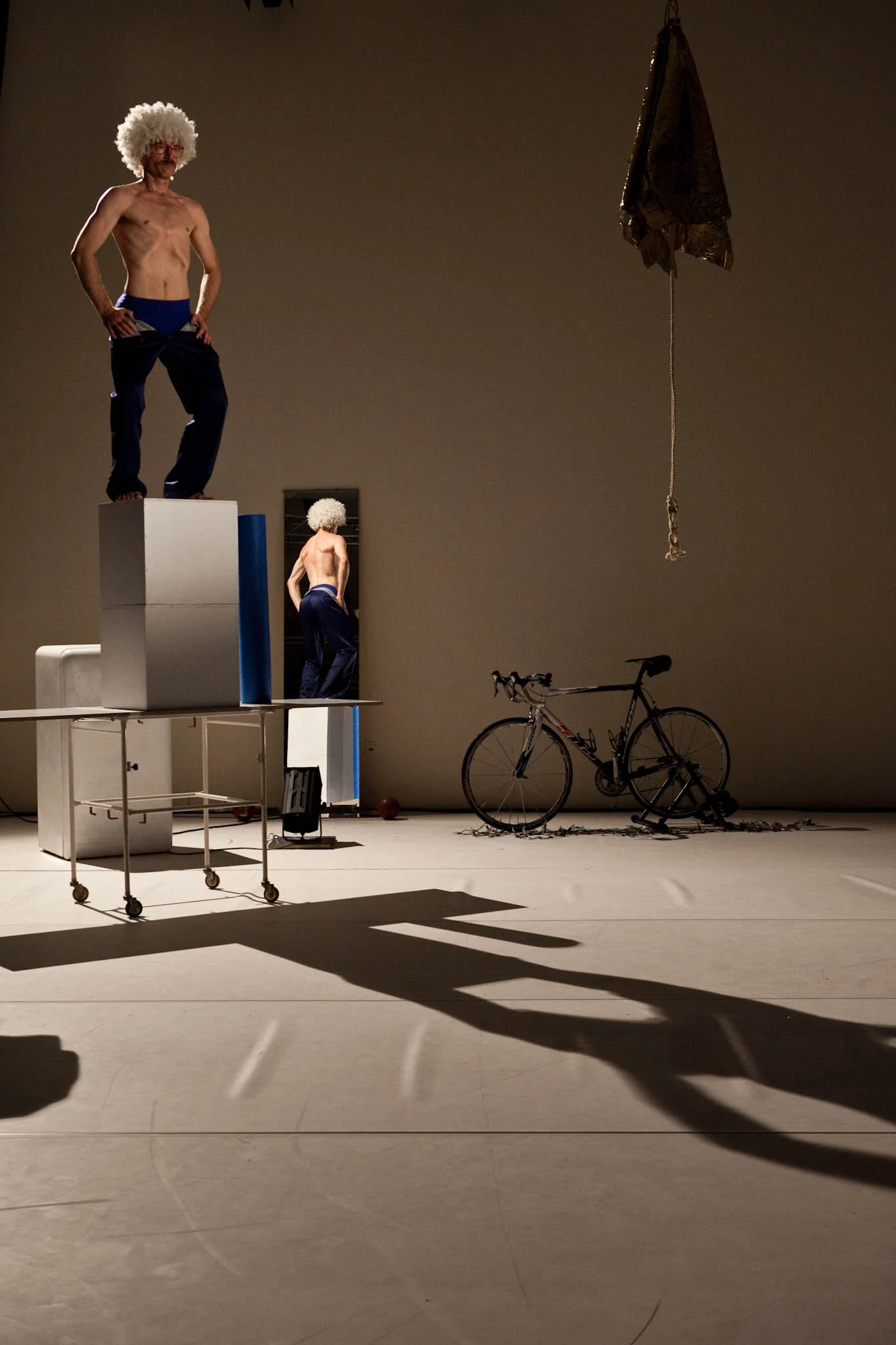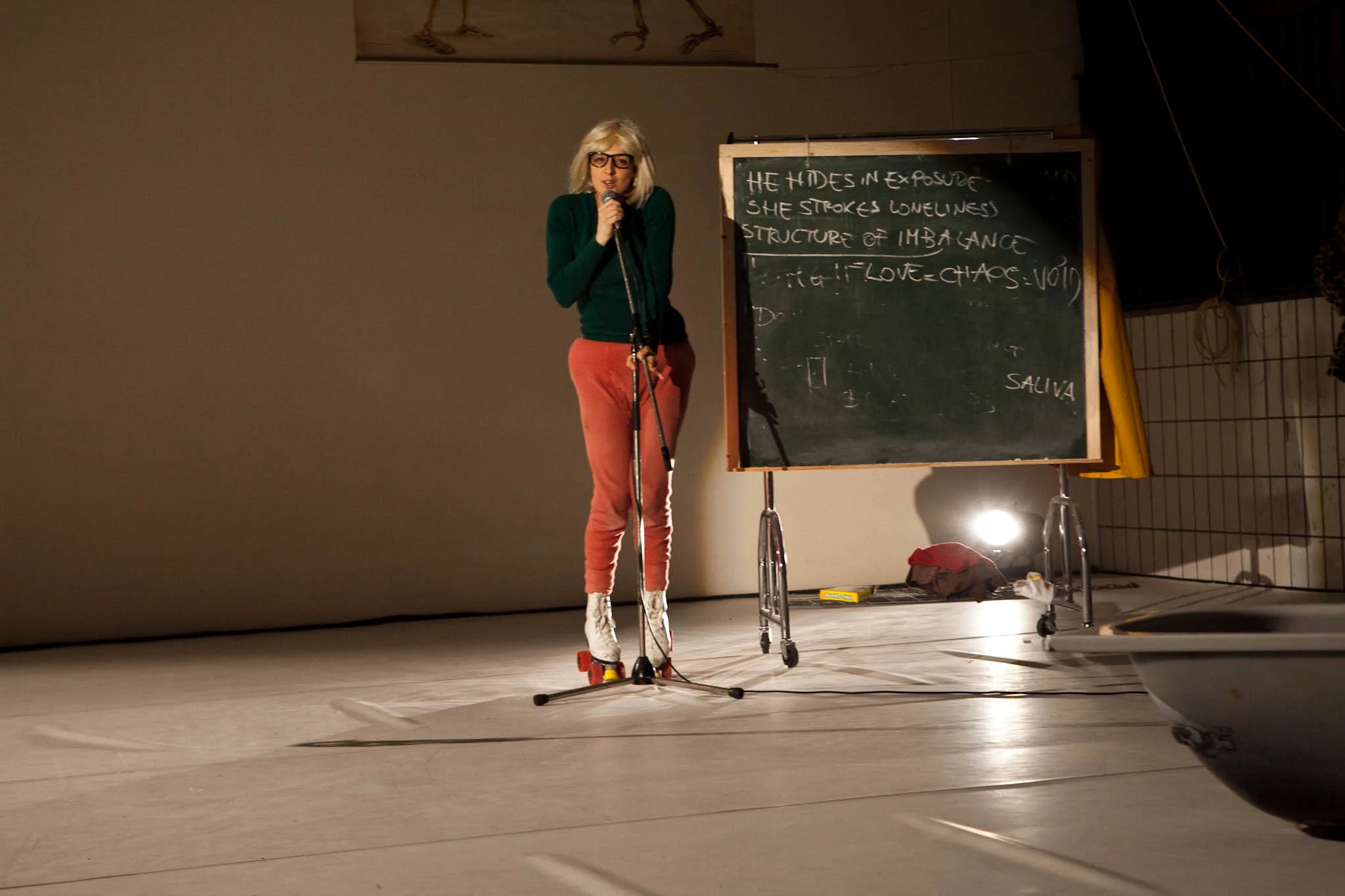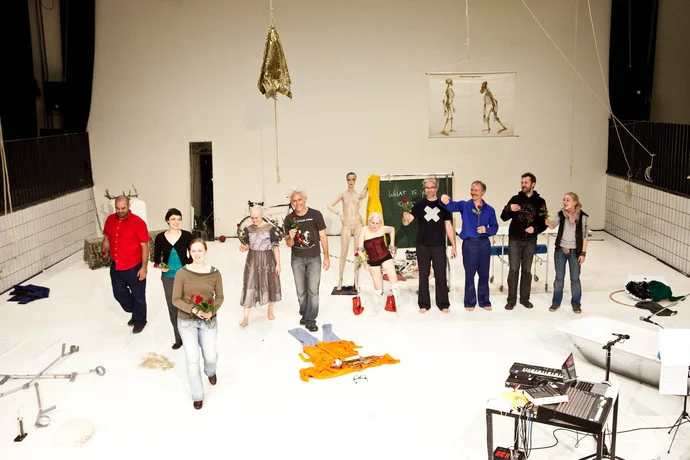
DANCES FOR NON/FICTIONAL BODIES
Introduction
Welcome. This is a multi-dimensional web archive of the performance project Dances for Non/Fictional Bodies. It is an experiment in the act of remembering. It hopefully can also function as a tool for those who didn't see the piece to imagine what it might have been like.
It is also an improvisational choreography of clicks and links; as you move your mouse or trackpad around your desktop in different pathways and poke, press or click on images that interest you, we hope to draw you into a digital web of records of our thoughts, feelings, and actions that will hopefully provoke interesting thoughts, feelings and actions in and through you.
Engaged in Questions
This project was engaged in a number of questions. We asked ourselves how our imaginations and our bodies interact? How do the ways we imagine our bodies shape and change both their cultural relevance and their material actuality? How do our bodies shape our imaginations? Can re-imagining our bodies and re-embodying our imaginations be useful tools for making society more open, just and satisfying for us all?
Our laboratory was a meeting of diverse bodies and performance practices. The range of sizes, shapes and styles of training that made up our bodies was broader than in many "dance" based companies. Our differences forced us to question the ways we imagine ourselves and each other and to imagine and negotiate new ways of dancing and playing together, not just in spite of, but actually in celebration of those differences.
This Project was an Experiment
At the same time the project was an experiment in collaborative process. What kind of non-hierarchical and decentralized structures could we use to create a performance work that mobilized the full imaginative capacities of a diverse creative team? Could this type of decentralized collaborative process be satisfying to all the members of the artistic team and create a satisfying experience for an audience? How could we meaningfully invite the living audience and their very real bodies into the collaboration of sensing and making sense that is the work and play of performance? Now we can ask how these images and words might resonate in your body the body that sees them later on a screen.
I hope that you will enjoy and be challenged by whatever in our project has brought your body to sit at your computer and receive some of the traces of other times and spaces that our bodies inhabited. I hope even more that some of the things you see here might inspire you to get up from your computer and go make the dance that your 'non/fictional body' wants to make.
Jess Curtis
Artistic Director, Gravity

CREDITS & COLLABORATORS
Conceived and Directed by: Jess Curtis
Created and Performed by: Claire Cunningham, Jess Curtis, Matthias Herrmann, Jörg Müller, Maria Francesca Scaroni, and Bridge Markland
UC Davis Performances Created and Performed also by David Toole
Dramaturge/Provocateur: Guillermo Gómez-Peña
Music: Matthias Hermann, Claire Cunningham and Gravity
with additional music by Roy Orbison (In Dreams), Ennio Morricone (Il Triello from The Good, The Bad, and The Ugly), The Doors (Light my Fire) Johann Sebastian Bach (BWV 4 Cantata: Christ lag in TodesbandenIII. Versus II - Den Tod niemand zwingen kunnt)
Lighting Design: David K H Elliott
Scenic and Costume Design: Daniela Petrozzi
Video: Yoann Trellu
Technical Director: Tony Shayne
Production Berlin: Mira Moschallski
Production San Francisco: Hope Mirlis
Administration San Francisco: Randy Symank
Administration La Pocha Nostra: Emma Tramposch
Graphic Design: Björn Andresen
Photography: Sven Hagolani, Kristine Slipson
Production Intern Berlin: Irene Cortina Gonzalez
UC Davis Production Team:
Lighting Design: Jacob Nelson
Costume Whisperer: Kaino Hopper
Stage Manager: Rosamund Grimshaw
Assistant Stage Manager: Paige Grecco
Scenic Design: Joshua Steadman
All Documentary Video by Laura Lukitsch/Global Performance Media, with additional camera work by Shai Levy and Andrea Keiz
UC Davis Stage Version - Kristine Slipson
Photographs by Kristine Slipson from the stage version of the show at the Studio Theater at the Mondavi Center at UC Davis in February, 2010.
Click image for detail.
Site Specific Photo Project - Sven Hagolani
In our ongoing collaboration with photographer Sven Hagolani, he proposed a series of location shoots in response to each of the 'Fictional Bodies' of the piece.
Click image for detail.
Berlin Installation Photos - Sven Hagolani
Sven Hagolani's photographs of the Uferstudios Installation performances in November, 2010.
Click image for detail.

VIDEOS
CLICK TO WATCH ▶
Installation Trailers
Stage Trailers
Full Length Staged Version
Live Projections
These videos were all projected live during the show on various surfaces and objects.
Object Environment Projection
This projection was the primary light source for the cycling/red riding hood section of the work. It was projected across the entire stage and backdrop. See the YBCA trailer video for an idea of how it was used.
Claire's Face
This projection traversed the backdrop during Claire's 'Space Man' Solo and finally landed on her, illuminating her as the spaceman 'died.'
'Evolution Poster' Projections
An old East German Educational "Evolution" Poster displaying an ape and human skeleton hung upstage left on the set. The poster became a projection screen at various moments during the piece. We hoped it would function as a kind of 'haptic gallery' underlining the relations of bodies and objects in the piece.
Floating Objects
All of the objects pictured in this video were also present on the stage and were handled at various times by the performers.
Bridge Dancing
This video also appeared on the "Evolution" poster upstage left.
Floating Hand
This video also appeared on the "Evolution" poster upstage left.
Line Dance
This video also appeared on the "Evolution" poster upstage left.
Outtakes
Video material and video of performance material that 'ended up on the cutting room floor' as it were. The "Talking Heads" were material from a video projection idea using Guillermo Gomez Peña's text that didn't end up making it into the show.

WRITINGS, ARTICLES, PRESS
Click the title to read words of various kinds from a variety of people written from within, and in response to, the DNFB process and performances.

PROCESS JOURNALS
Click on the title to read day by day documentation of rehearsal and production activities throughout each phase of the DNFB process.

BIBLIOGRAPHY
Benjamin, A. (2002). Making an entrance: theory and practice for disabled and non-disabled dancers. London; New York, Routledge.
Brennan, T. (2004). The transmission of affect. Ithaca, Cornell University Press.
Butler, Judith. (2006). Gender Trouble : Feminism and the Subversion of Identity. Routledge Classics. New York: Routledge,
Çetin, F. Ç. (2001). "Suicide Attempts and Self-Image Among Turkish Adolescents." Journal of Youth and Adolescence 30 ( Number 5, October 2001): pp. 641-651.
Davis, L. J. (1995). Enforcing normalcy : disability, deafness, and the body. London ; New York, Verso.
Eco, U. (1977). " Semiotics of Theatrical Performance." The Drama Review: TDR Vol. 21 (No. 1, Theatre and Social Action Issue(Mar., 1977)): pp. 107-117.
Foster, S. L. (2008). Movements Contagion: the kinesthetic impact of performance. The Cambridge companion to performance studies. T. C. Davis. New York, Cambridge University Press: xi, 193 p.
Garland-Thomson, R. (2009). Staring : how we look. Oxford ; New York, Oxford University Press.
Goffman, E. (1959). The presentation of self in everyday life. Garden City, N.Y.,, Doubleday.
Gomez-Peña, G. (2003). "In defense of performance." Unpublished
Jones, A. (2006). Self/Image : technology, representation, and the contemporary subject. New York, Routledge.
Kuppers, P. (2004). Disability and contemporary performance : bodies on edge. New York, Routledge.
Lepecki, A. (2006). Exhausting dance : performance and the politics of movement. New York ; London, Routledge.
Leth, J. (1967). The Perfect Human (Danish: Det perfekte menneske): 13 minutes.
Marks, L. U. (2000). The skin of the film : intercultural cinema, embodiment, and the senses. Durham, Duke University Press.
Marks, L. U. (2002). Touch : sensuous theory and multisensory media. Minneapolis, University of Minnesota Press.
Miller, W. I. (1997). The anatomy of disgust. Cambridge, Mass., Harvard University Press.
Morris, C. W. (1938). Foundations of the theory of signs. Chicago, Ill.,, The University of Chicago Press.
Orbach, Susie. (2009). Bodies : Big Ideas, Small Books. 1st Picador ed. New York: Picador.
Rancière, J. (2009). The emancipated spectator. London, Verso.
Sandahl, C. and P. Auslander (2005). Bodies in commotion : disability & performance. Ann Arbor, University of Michigan Press.
Thomson, Lynn M. (2003). "Teaching and Rehearsing Collaboration." Theatre Topics 13, 1.March 2003 pg. 117-28.
Von Trier, L. and J. Leth (2003). The Five Obstructions (Danish: De Fem benspænd), Zentropa Real ApS and Koch-Lorber Films: 103 minutes.

FUNDERS & THANKS
Dances for Non/Fictional Bodies was co-commissioned by Yerba Buena Center for the Arts (San Francisco), Fabrik Potsdam (Potsdam, Germany), Tigertail Productions/Florida Dance Association (Miami) and the National Performance Network co-commissioning program. The commissioning and production of the world premiere was made possible by The Wallace Alexander Gerbode Foundation and The William and Flora Hewlett Foundation Choreographer Collaboration 2008 initiative. The project was made possible in part by a grant from The Creative Work Fund, a program of the Walter and Elise Haas Fund supported by generous grants from The William and Flora Hewlett Foundation and The James Irvine Foundation and the Fonds Darstellende Künste (Germany) “Dances for Non/Fictional Bodies” was also funded by a San Francisco Arts Commission Organization Project Grant; the Phyllis C. Wattis Foundation; the Lighting Artists in Dance Award, a program of Dancers’ Group; The San Francisco Hotel Tax Fund – Grants for the Arts and the New England Foundation for the Arts’ National Dance project (NDP) with generous support from the Doris Duke Charitable Foundation, the Andrew W. Mellon Foundation, the Ford Foundation, and the MetLife Community Connections Fund of the MetLife Foundation. Additional technical and production support has been generously provided by the UC Davis Department of Theater and Dance.
Some Examples of our Funding Proposals
Special Thanks
Karen Schaffman and Eric Geiger from PADL, Angela Mattox and the staff at Yerba Buena Center for the Arts. Uferstudios Berlin: Barbara Friedrich, Ana Rocha, Conny Breitkreutz, Heinz Herlitz, The Ponderosa TanzLand Festival, Stephanie Maher, Gabi Beier, Ron Estes, Leslie Seiters, Della Davidson, Peter Lichtenfels, Lynette Hunter, Yvonne Hardt, Keith Hennessy, H. J. Nieman, Heike Diehm and Thalia Shcure from K3 Berlin, Susanne Foellmer, Peter Pleyer, Nanako Nakajima, Rosamund Grimshaw, E. Kaino Hopper, Josh Steadman, Paige Greco, Eric Kupers, Judith Smith and Axis Dance, Eric Kupers and the CSU East Bay Dance for All Bodies Program, Susan Mizner and the San Francisco Mayor’s Office on Disability, The UC Davis Department of Theater and Dance.

DRAWINGS & TECHNICAL DOCUMENTATION
Designs, Drawings and Technical Info from the Show
Click on the items below on to download PDFs of various drawings, designs, tech riders and sketches for the show.
Riders and Specs
YBCA Lightplot
Postcards and Program
This is a small selection of the printed art done by Björn Andresen, our fantastic graphic guy in Berlin.
Drawings
Drawings by scenic and costume designer Daniela Petrozzi done during rehearsals and which were used ie. inside the brochure or this website.
If you like, you can download the whole set of Daniela's drawings: Drawings (20MB)
